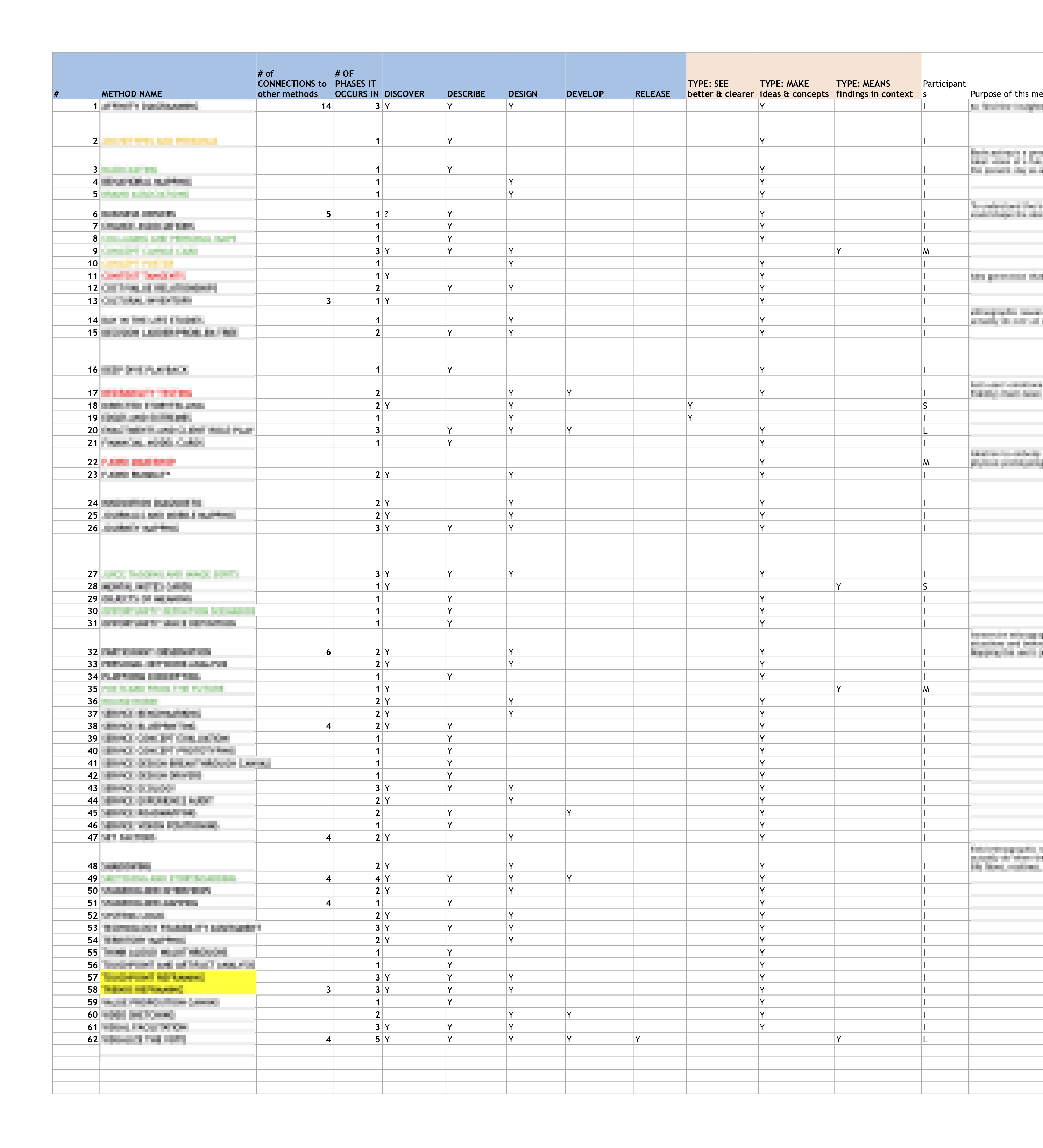Story
So what did you do about it?
Research
At first, we started by reviewing one method at a time. But I quickly realized that there were more effective ways to go about it.
After interviewing designers about their needs, I found that the workshops, while informative, didn't meet designers' immediate needs on their projects: to be able to identify the right methods to use for each unique situation and part of the design process.
Information architecture
The challenge was that the method documentation contained about 60 methods, but did not categorize them in a way that helped designers identify the right methods for the project. At this point, I had done enough research into the methods to see a pattern and realize that the answer was to develop a taxonomy that would help designers find the right method.
Workshop design
I knew it would be much more effective for designers to look at all the methods at once and figure out how to categorize them. The comparison and quick orientation into the methods was more useful at this point than an in-depth exploration of each method. The reason for this is that the designers needed to be able to evaluate a client project and select from all the methods in order to pick the one that was right for them. So I modeled an exercise that would hellp them quickly become acquainted enough with the methods to be able to distinguish them. Because of designers' unpredictable schedules, I also designed the workshops so that people would not have to attend all of them in order to understand the material. And I kept the sessions short.
Workshops
This effort culminated in a finite series of workshops which functioned as co-creation sessions. Teams of designers worked together to sort and categorize the methods into high-level categories based upon the Luma Institute's Taxonomy of Innovation. Lively discussions ensued based on the category--or multiple categories---a method should belong to. We also included some of our Accenture team members in the workshops, which helped them understand--and advocate for-- our design process.
Results
By the end, we had effectively categorized all the methods into 3 categories and 9 sub-categories. In addition to the lively dialogue designers had while deciding how to categorize the methods, we had a short discussion about why we made the decisions we made. After this, designers were better able to categorize methods and to select methods. They quickly became familiar with methods they didn’t know about before, and knew where to look when they needed a new method. This enabled our studio to provide better, more Fjord-branded service to our clients.


